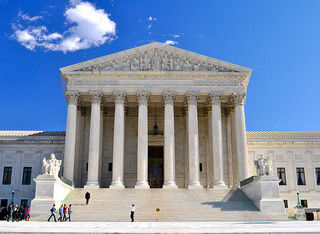
© unknown
On Monday, the Supreme Court reviews President Obama's most egregious abuse of executive power to date: the assertion that he decides when the Senate is in session.
In case you missed the controversy two years ago, President Obama made three "recess appointments" to the National Labor Relations Board (NLRB) without the constitutionally required advice and consent of the Senate. Unfortunately for him, the Senate was not in recess.
Recess appointments alone aren't the problem. The Constitution allows the president to keep the government running by filling "vacancies that may happen during a Recess of the Senate." But it would certainly be unconstitutional if the president made "recess" appointments during a Senate lunch break or over the weekend. In the case of Obama's NLRB appointments, the Senate had a session the previous day and another was planned for two days later.
President Obama avoided those inconvenient facts by declaring that, in his opinion, the Senate wasn't really in session.
The president's constitutional run-around perpetuates an already slippery slope of presidents slowly expanding the recess appointments power beyond its constitutional limits to avoid Senate rejection of controversial nominees. The Supreme Court should stop this slide, and invalidate President Obama's appointments.
The slippery slope began with the question of what defined a "vacancy." The phrase "vacancies that may happen" strongly points to only those vacancies that open up during a recess - perhaps because of a sudden death - rather than those that happen while the Senate is in session and carry-over into a recess. Indeed, this was the interpretation of Edmund Randolph, George Washington's Attorney General and one of the principal authors of the Constitution.
By the 1820s, however, presidents began to ignore this constraint.
Next came the question: what is a "recess?" The Senate takes many breaks - coffee breaks, dinner breaks, holiday breaks etc. - that are technically recesses. Those are called
intrasession recesses, and are distinguished from official breaks between sessions, known as intersession recesses. Although the Constitution strongly implies that appointments can only be made during intersession recesses, by the 1920s presidents began making appointments during intrasession recesses.
This led to the question of how long an intrasession recess must be for the president to make appointments. Surely a recess appointment during a Senate bathroom break would be unconstitutional, but how short is too short? The first intrasession recess appointment, by President Harding, was during a 28-day recess. Since then, executives have predictably tested that limit in a mutually reinforcing, bi-partisan game of "how low can you go?" By the Clinton and George W. Bush administrations, the answer seemed to be 10 days.
By 2007, recess appointments had became so contentious that Harry Reid began holding "pro forma" sessions every three days to close the window in which Bush could make appointments. During a pro forma session, a lone senator gavels an empty chamber to order and then ends the session, often just one minute later.
Not to be outdone in political chicanery, the Republicans adopted the same tactic to block Obama's nominees.
Such sham sessions are blatant political gamesmanship, but they are also official Senate sessions. Sometimes, real work even gets done, such as the two month extension of the payroll tax cut passed during the December 23, 2011 pro forma session, just 11 days before President Obama's recess appointments.
Understandably frustrated with Republican obstructionism, Obama decided that he wouldn't let pro forma sessions block his appointments. The sessions, he argued, were not "real" sessions, thus giving him the awesome power to decide whether the Senate is in session.
Partisan obstinacy, no matter how extreme, does not give the executive power over the inner-workings of a branch that serves as a check on the president. The president must respect the rules of the legislative branch, which are constitutionally given to the House and the Senate alone.
President Obama's attempted solution to obstructionist politics is dangerous and unconstitutional. To understand just how dangerous, the President's supporters need only to imagine this awesome power in the hands the other party.
The Supreme Court needs only to answer one question to properly dispose of this case: Who decides whether the Senate is in session? The answer is certainly not the president. Three lower courts have already ruled the recess appointments unconstitutional, the Supreme Court should as well. This time the President has gone too far.
Trevor Burrus is a Research Fellow at the Cato Institute's Center for Constitutional Studies.
"On Monday, the Supreme Court reviews President Obama's most egregious abuse of executive power to date"
This is just a dog and pony show for the masses. The supremely corrupt court still has to go through the motions, acting like they are protecting the constitution. Bases upon previous bassackwards rulings concerning the constitutionality of recently passed bills, I have zero confidence in the JUST-US system.